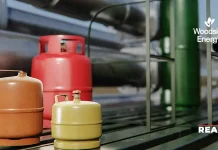Researchers at the Department of Energy’s SLAC National Accelerator Laboratory and Stanford University with collaborators at the University of Oregon and Manchester Metropolitan University have found a way to tease hydrogen out of the ocean by funneling seawater through a double-membrane system and electricity. Their innovative design proved successful in generating hydrogen gas without producing large amounts of harmful byproducts. The results of their study, published in Joule, could help advance efforts to produce low-carbon fuels.
“Many water-to-hydrogen systems today try to use a monolayer or single-layer membrane. Our study brought two layers together,” said Adam Nielander, an associate staff scientist with the SUNCAT Center for Interface Science and Catalysis, a SLAC-Stanford joint institute. “These membrane architectures allowed us to control the way ions in seawater moved in our experiment.”
Also Read: Chevron and the Angelicoussis Group Announce Ammonia Carrier Joint Study Agreement
Hydrogen gas is a low-carbon fuel currently used in many ways, such as to run fuel-cell electric vehicles and as a long-duration energy storage option – one that is suited to store energy for weeks, months or longer – for electric grids.
Many attempts to make hydrogen gas start with fresh or desalinated water, but those methods can be expensive and energy intensive. Treated water is easier to work with because it has less stuff – chemical elements or molecules – floating around. However, purifying water is expensive, requires energy, and adds complexity to devices, the researchers said. Another option, natural freshwater, also contains a number of impurities that are problematic for modern technology, in addition to being a more limited resource on the planet, they said.
To work with seawater, the team implemented a bipolar, or two-layer, membrane system and tested it using electrolysis, a method that uses electricity to drive ions, or charged elements, to run a desired reaction. They started their design by controlling the most harmful element to the seawater system – chloride – said Joseph Perryman, a SLAC and Stanford postdoctoral researcher.
A home for hydrogen
An ideal membrane system performs three primary functions: separates hydrogen and oxygen gases from seawater; helps move only the useful hydrogen and hydroxide ions while restricting other seawater ions; and helps prevent undesired reactions. Capturing all three of these functions together is hard, and the team’s research is targeted toward exploring systems that can efficiently combine all three of these needs.
SOURCE: MITECHNEWS




